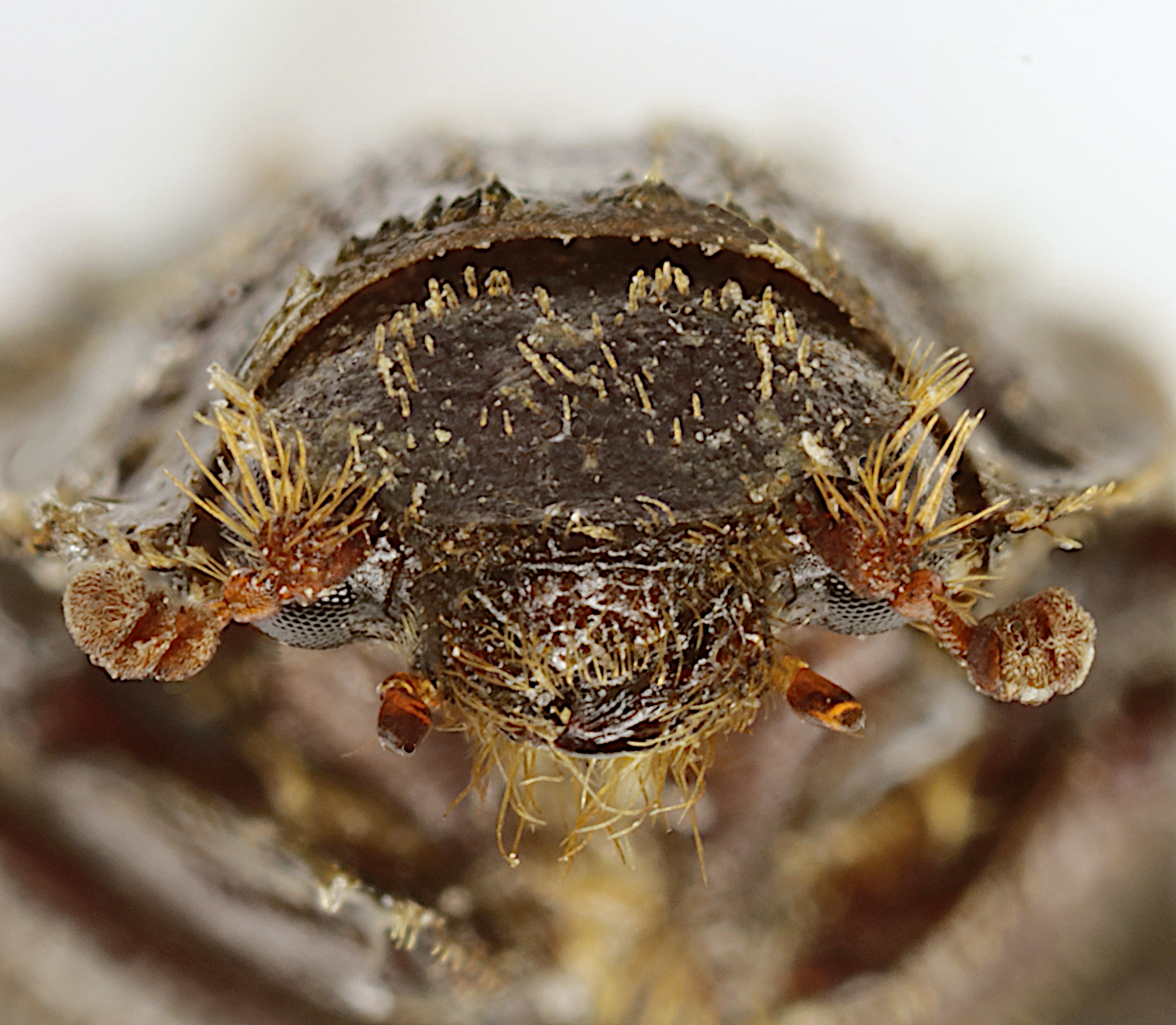|
Omorgus Suberosus
''Omorgus suberosus'', common name hide beetle, is a beetle of the family Trogidae Trogidae, sometimes called hide beetles, is a family of beetles with a distinctive warty or bumpy appearance. Found worldwide, the family includes about 300 species contained in four or five genera. Trogids range in length from 2 to 20 mm. Thei .... Description ''Omorgus suberosus'' can reach a length of .Arthur V. EvanBeetles of Eastern North America/ref> The dorsal surface is convex and very rough, with ridges and tubercles, pale brown in color. Pronotum has long fine setae. These insects are carrion feeders. They overwinter as adults. Distribution This species is present in Czech Republic, Hungary, Spain, from southern USA to South America and in Australia (New South Wales, Queensland, Victoria, Western Australia). References * Fabricius J.C. (1775) Systema Entomologiae, sistens insectorum classes, ordines, genera, species, adiectis synonymis, locis, descriptionibus, observationibus, ... [...More Info...] [...Related Items...] OR: [Wikipedia] [Google] [Baidu] |
Johan Christian Fabricius
Johan Christian Fabricius (7 January 1745 – 3 March 1808) was a Danish zoologist, specialising in "Insecta", which at that time included all arthropods: insects, arachnids, crustaceans and others. He was a student of Carl Linnaeus, and is considered one of the most important entomologists of the 18th century, having named nearly 10,000 species of animals, and established the basis for the modern insect classification. Biography Johan Christian Fabricius was born on 7 January 1745 at Tønder in the Duchy of Schleswig, where his father was a doctor. He studied at the gymnasium at Altona and entered the University of Copenhagen in 1762. Later the same year he travelled together with his friend and relative Johan Zoëga to Uppsala, where he studied under Carl Linnaeus for two years. On his return, he started work on his , which was finally published in 1775. Throughout this time, he remained dependent on subsidies from his father, who worked as a consultant at Frederiks Hospita ... [...More Info...] [...Related Items...] OR: [Wikipedia] [Google] [Baidu] |
Beetle
Beetles are insects that form the order Coleoptera (), in the superorder Endopterygota. Their front pair of wings are hardened into wing-cases, elytra, distinguishing them from most other insects. The Coleoptera, with about 400,000 described species, is the largest of all orders, constituting almost 40% of described insects and 25% of all known animal life-forms; new species are discovered frequently, with estimates suggesting that there are between 0.9 and 2.1 million total species. Found in almost every habitat except the sea and the polar regions, they interact with their ecosystems in several ways: beetles often feed on plants and fungi, break down animal and plant debris, and eat other invertebrates. Some species are serious agricultural pests, such as the Colorado potato beetle, while others such as Coccinellidae (ladybirds or ladybugs) eat aphids, scale insects, thrips, and other plant-sucking insects that damage crops. Beetles typically have a particularly hard e ... [...More Info...] [...Related Items...] OR: [Wikipedia] [Google] [Baidu] |
Trogidae
Trogidae, sometimes called hide beetles, is a family of beetles with a distinctive warty or bumpy appearance. Found worldwide, the family includes about 300 species contained in four or five genera. Trogids range in length from 2 to 20 mm. Their shape is oblong to oval, with a generally flat abdomen. Their color ranges from brown to gray or black, and they often encrust their bodies with soil. They resemble scarab beetles with heavy limbs and spurs. They are scavengers and are among the last species to visit and feed on carrion. They are most often found on the dry remains of dead animals. Both adults and larvae eat feathers and skin. Some species are found in bird and mammal nests. Details of the life histories of many species are poorly known, since many are specialized to particular types of nests. They are often overlooked by predators and collectors due to their behaviors of covering their bodies with soil and becoming motionless when disturbed. This group may also be con ... [...More Info...] [...Related Items...] OR: [Wikipedia] [Google] [Baidu] |
Omorgus
''Omorgus'' is a genus of beetles of the family Trogidae with about 140 species worldwide. ''Omorgus'' beetles are generally between 9 and 20 mm long. Taxonomy ''Omorgus'' has three subgenera, '' Omorgus (Omorgus)'', '' Omorgus (Afromorgus)'', and '' Omorgus (Haroldomorgus)'', with the following species: Subgenus ''Omorgus'' * '' Omorgus alatus'' (Macleay, 1888) * '' Omorgus alius'' (Scholtz, 1986) * '' Omorgus alternans'' (W.S. Macleay, 1826) * '' Omorgus amictus'' (Haaf, 1954) * '' Omorgus aphanocephalus'' (Scholtz, 1986) * '' Omorgus asper'' LeConte, 1854 * '' Omorgus augustae'' (Blackburn, 1892) * '' Omorgus australasiae'' (Erichson, 1842) * '' Omorgus badeni'' (Harold, 1872) * '' Omorgus borrei'' (Harold, 1872) * '' Omorgus brucki'' (Harold, 1872) * '' Omorgus candezei'' (Harold, 1872) * '' Omorgus candidus'' (Harold, 1872) * '' Omorgus capillamentis'' Strümpher & Scholtz, 2011 * '' Omorgus carinatus'' (Loomis, 1922) * '' Omorgus carinicollis'' (Scholtz, 1986) * '' Omorgus ... [...More Info...] [...Related Items...] OR: [Wikipedia] [Google] [Baidu] |

